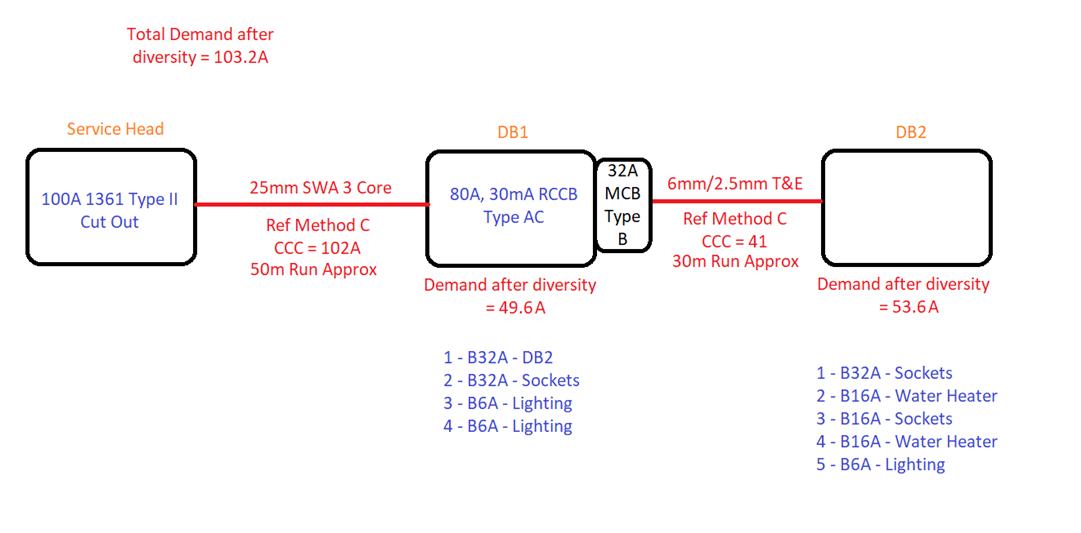I have come across an old commercial site with several boards/sub-boards non of which have been considered for selectivity with MCBs or RCDs.
When looking at the demand and diversity from 1 supply nothing seems to add up, or either I'm looking at this all wrong.

DB2 I would assume that the demand after diversity is too great for 1-the 6mm cable CCC and 2-the 32A MCB supply from DB1 is underrated.
if anyone could provide some clarity on this installation that would be helpful.
Currently, I'm working my way through the IET design guide and trying to get a better understanding.
Thanks
